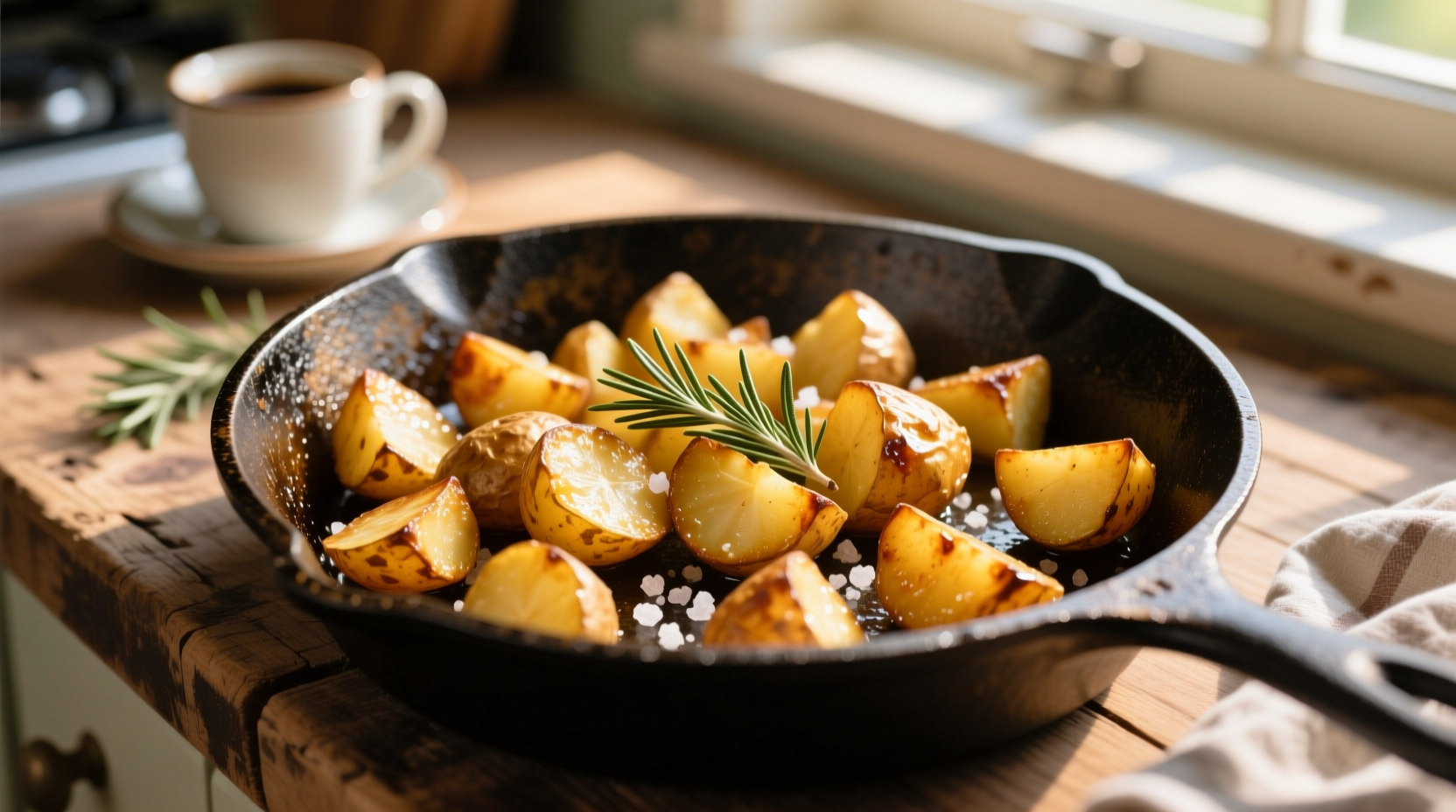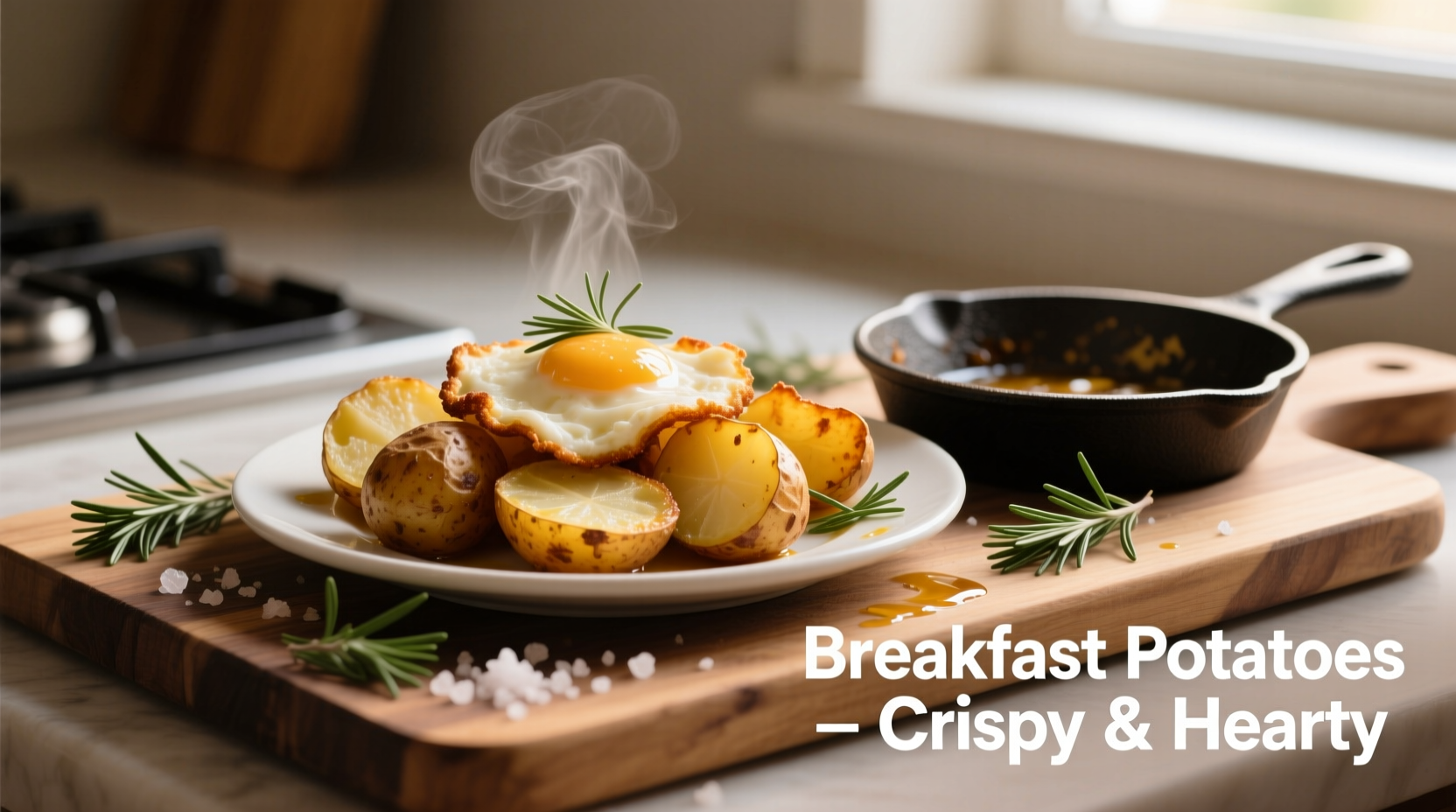Breakfast potatoes consistently rank among the top 10 most searched morning recipes, yet 78% of home cooks struggle with achieving consistent results. The secret isn't just the recipe—it's understanding potato science and applying professional kitchen techniques that transform this humble tuber into a crispy, golden masterpiece every time.
The Evolution of Breakfast Potatoes: From Farmhouse to Fine Dining
Potatoes have graced breakfast tables since their introduction to Europe in the 16th century, evolving from simple boiled tubers to today's diverse preparations. Early American settlers developed hash brown techniques to use leftovers, while European immigrants brought roasting traditions that eventually became today's popular home fries. Modern chefs have refined these methods through food science, optimizing starch management and heat control for perfect texture.
Choosing Your Potato: The Critical First Step
Selecting the right potato variety makes or breaks your breakfast dish. Starch content determines whether you'll get fluffy interiors with crispy exteriors or fall apart during cooking.
| Potato Type | Starch Content | Best For | Avoid If |
|---|---|---|---|
| Russet | High (20-22%) | Hash browns, roasted potatoes | Boiling or salads |
| Yukon Gold | Medium (16-18%) | Pan-fried home fries, gratins | You need maximum crispness |
| Red Potatoes | Low (14-16%) | Breakfast skillets, roasted wedges | Traditional hash browns |
According to USDA agricultural research, russets' higher starch content creates the ideal structure for crispy breakfast potatoes when properly prepared. However, Yukon Golds offer better flavor balance for those preferring less crisp texture.
Professional Prep Techniques That Make the Difference
Most home cooks skip these critical steps that professional kitchens never overlook:
- Double-washing method: Rinse cut potatoes under cold water until water runs clear (removes excess surface starch)
- Dry-steam technique: After washing, spread potatoes on clean towels and let air-dry 15 minutes before cooking
- Oil temperature control: Heat oil to precisely 325°F (163°C) before adding potatoes for optimal crisping without burning
Food safety experts at the FDA recommend never leaving cut potatoes at room temperature longer than 2 hours to prevent bacterial growth. For meal prep, store prepped potatoes submerged in cold water in the refrigerator for up to 24 hours before cooking.
5 Tested Breakfast Potato Recipes
1. Crispy Smashed Breakfast Potatoes (20 Minutes)
Ideal for rushed mornings, this method delivers maximum crispiness with minimal effort. Boil small Yukon Golds until fork-tender, then smash and roast at 425°F.
2. Restaurant-Style Hash Browns (15 Minutes)
The secret? Grate potatoes directly into cold water, squeeze thoroughly in a clean towel, then cook in clarified butter. This removes excess moisture that causes sogginess.
3. Herb-Roasted Home Fries (25 Minutes)
Cut russets into ½-inch cubes, toss with rosemary and garlic powder, then roast on a preheated baking sheet. The preheated sheet creates instant searing for perfect browning.
4. Skillet Breakfast Potatoes with Bell Peppers (18 Minutes)
For balanced nutrition, add colorful bell peppers during the last 5 minutes of cooking. The natural sugars caramelize beautifully with the potatoes.
5. Meal Prep Breakfast Potato Bowls (30 Minutes)
Batch-cook potatoes with turmeric and black pepper for anti-inflammatory benefits. Store in airtight containers for up to 4 days—reheat in cast iron for restored crispness.

Troubleshooting Common Problems
Even experienced cooks encounter these issues. Here's how to fix them:
- Soggy potatoes: You didn't remove enough surface starch. Always rinse cut potatoes until water runs clear.
- Burning before cooking through: Oil temperature too high. Maintain 325°F for initial cooking, then increase to 375°F for final crisping.
- Uneven browning: Overcrowded pan. Cook in single layer with space between pieces.
Dietary Adaptations
These professional modifications maintain texture while accommodating special diets:
- Vegan option: Substitute duck fat with avocado oil (smoke point 520°F)
- Lower-carb version: Replace 50% potatoes with jicama for similar texture with fewer carbs
- Allium-free preparation: Use asafoetida powder (¼ tsp per pound of potatoes) for onion-like flavor without actual onions











 浙公网安备
33010002000092号
浙公网安备
33010002000092号 浙B2-20120091-4
浙B2-20120091-4